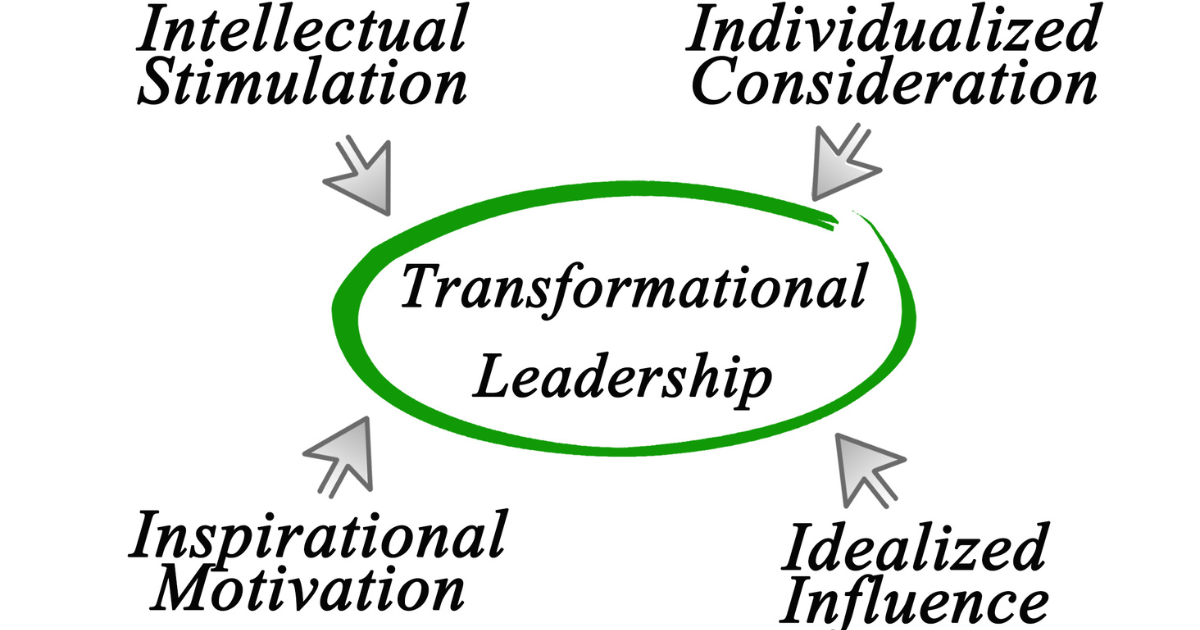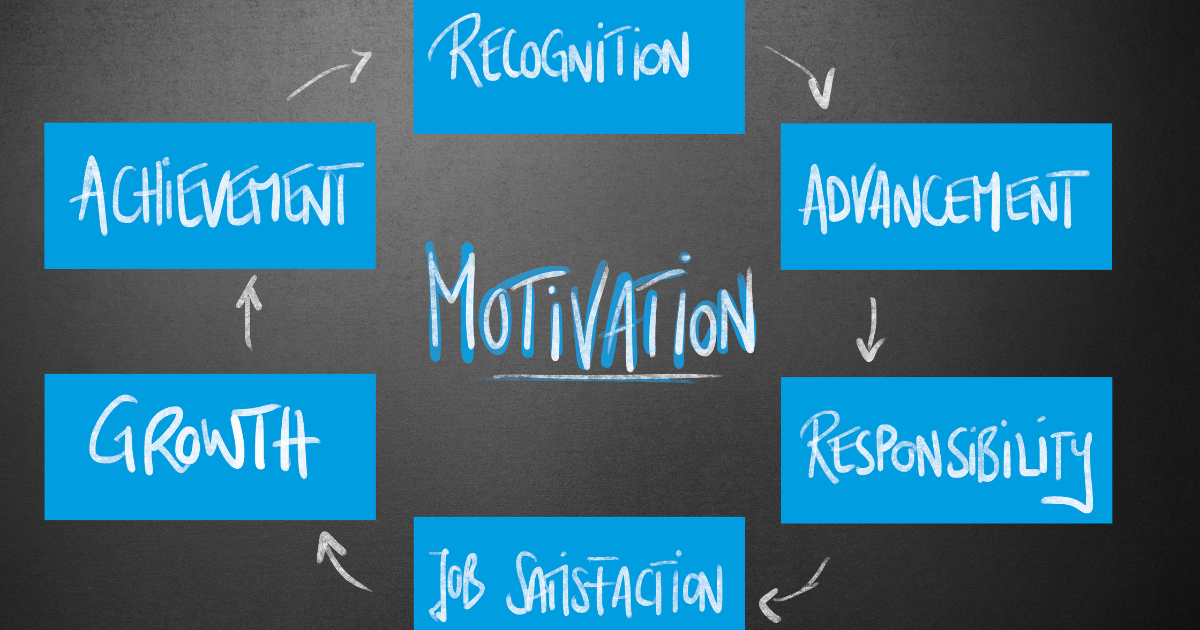Effective leadership is not just about giving orders and delegating tasks. It’s about inspiring and motivating others to achieve their full potential. With the right mindset and tools, you can become a successful leader and make a positive impact on those around you.
In this guide, you will learn the fundamentals of effective leadership and how to unlock your full potential as a leader. You will discover how to overcome common leadership challenges and grow as a leader, both personally and professionally.
Whether you are just starting out or looking to improve your current leadership skills, this guide will provide you with the knowledge and inspiration you need to become a successful and effective leader.
So let’s get started on this journey of unlocking your potential and becoming the leader you were meant to be.
Key Takeaways
- Developing effective leadership requires building emotional intelligence, self-awareness, and a compelling vision statement that aligns with your unique leadership style.
- Building trust and respect through open communication, delegation, team building, and constructive feedback fosters a positive workplace culture and helps maintain motivation and engagement.
- Effective leadership requires adaptability, resilience, and a commitment to lifelong learning and seeking feedback. Embracing change and promoting diversity and collaboration are essential for growth and success.
- Nonverbal communication and conflict resolution skills are crucial aspects of effective leadership, and mentorship programs can benefit both the mentor and the mentee in achieving specific goals and developing new skills.
Understanding Leadership
You’re a natural leader, capable of unlocking your potential to achieve greatness.
To do so, it’s important to understand what leadership truly means.
What is Leadership?
Leadership is about inspiring and guiding others towards a common goal, requiring certain qualities such as honesty, integrity, and empathy. It’s vital to distinguish between leadership and management: the former empowers individuals, while the latter controls and directs them.
Studying the historical evolution of leadership reveals a shift from a hierarchical approach to a more collaborative and inclusive one. Leadership can also vary based on context, whether leading a workplace team or directing volunteers in a community project.
Leadership isn’t merely a position or title; it’s a mindset that you can cultivate to unlock your potential and inspire those around you.
Different Types of Leadership Styles
Let’s dive into the different types of leadership styles that can help you achieve your goals.
Transformational Leadership
By transforming your leadership style, you can inspire your team to reach their full potential and achieve collective success. As a transformational leader, you have the power to empower your employees, inspire change, motivate teams, foster innovation, and develop leaders.
You firmly believe in the potential of your team and are committed to unleashing their creativity and skills. You lead by example, setting high expectations and providing support and guidance to help your team achieve their goals. Your ability to communicate a compelling vision and inspire others to follow sets you apart.
You are not afraid to take risks, challenge the status quo, and drive change. Your transformational leadership style can create a culture of excellence where everyone is encouraged to contribute and grow.
Transactional Leadership
Transactional leadership is a goal-oriented style that can be employed to effectively motivate your team. This method hinges on the establishment of clear expectations and the provision of rewards when these objectives are met. It’s this reward-based system that drives team members to perform, fostering an environment of accountability.
Accountability and motivation, two fundamental aspects of transactional leadership, go hand in hand. When team members are held accountable for their actions, the motivation to succeed is naturally kindled. Goals cease being abstract concepts and become tangible targets with real-world rewards or repercussions.
However, despite its potential benefits, transactional leadership may not always be applicable in every circumstance. Therefore, it’s crucial to remember that balance is key. Combining this approach with other styles of leadership can lead to more comprehensive and flexible management strategies.
Servant Leadership
Servant leadership is a crucial element of effective management. Its core principle is the prioritization of team members’ needs, serving them with genuine empathy and compassion.
As a servant leader, your key role is to lead by example. Humility and empathy are the cornerstones of this leadership style. These attributes foster an environment conducive to collaboration, empowering others to excel in their roles.
A common misconception about servant leadership is that it implies being overly submissive or letting go of personal goals. However, this is far from reality. In fact, servant leadership emphasizes recognizing the interconnection between your success and that of your team.
By placing your team’s needs at the forefront, you cultivate a culture grounded in trust and respect—two essential elements for any thriving team. This approach not only motivates everyone but also promotes a healthy work environment.
When you empower each person on your team to fully embrace their work responsibilities while utilizing their distinct skills and insights, you create a vibrant and innovative group capable of achieving remarkable outcomes.
Autocratic Leadership
Autocratic leadership carries a potential risk of stifling creativity and innovation within a team. When authority is heavily concentrated, it has the potential to lead to disengagement and a lack of motivation among team members.
Quick decision-making might be an advantage of this leadership style. However, over-reliance on one perspective for all decisions can brew resentment. There could be a weakened bond of trust and respect between leaders and employees in such settings.
The decision-making process in autocratic leadership often sidelines valuable insights from other team members. This narrow focus simply on the leader’s viewpoint prevents the creation of a holistic solution, diminishing overall team productivity.
The unilateral approach of autocratic leadership can negatively impact employee morale. Teams led with an iron fist may experience decreased productivity over time, alongside high turnover rates due to dissatisfaction.
As a leader, understanding the balance between swift decision-making and fostering collaboration is crucial. It’s important to know when to make prompt decisions but also when it’s necessary to step back for greater creativity within your team.
Democratic Leadership
Democratic leadership prioritizes a team-oriented approach, where each member’s perspective is valued, and their involvement in decision-making is actively encouraged. This style of leadership thrives on open communication, creating an environment wherein team members feel confident to share their thoughts and unique ideas. The result often leads to groundbreaking solutions and innovative strategies.
However, every leadership style has its advantages and potential pitfalls. On the bright side, democratic leadership can enhance team morale and job satisfaction by making employees feel part of something larger than just their individual tasks. They’re involved in shaping the direction of the team or organization, which brings about a sense of ownership and motivation.
On the downside, this inclusive approach may sometimes result in decision paralysis, causing delays or slower progress. Too many opinions can lead to confusion or clashes, with no clear consensus emerging from discussions.
Therefore, being an effective democratic leader requires more than just valuing everyone’s input. It necessitates possessing strong communication skills to facilitate open and productive discussions among the team. Additionally, they must exhibit strong problem-solving skills to navigate through differing viewpoints towards a common goal.
Laissez-faire Leadership
As a leader, it’s important to provide direction and guidance to avoid leaving your team feeling lost and unsupported. Laissez-faire leadership allows team members to take ownership of their work and creativity, but it has significant drawbacks.
Drawbacks of Laissez-Faire Leadership
Team members may become uncertain, leading to decreased productivity and success. This style requires a high level of trust and communication between the leader and their team.
Success in the Tech Industry
The tech industry is an example of the successful implementation of laissez-faire leadership, where innovation is key. This approach has led to some of the world’s most innovative products and services.
Effective Communication is Key
To implement laissez-faire leadership, establish effective communication channels between the leader and the team. This ensures team members feel supported and valued.
Provide Guidance and Support
Trust your team members, but provide guidance and support when needed. This helps to ensure team members stay motivated and focused on achieving their goals. Provide the resources and support necessary for your team to succeed.
Unlocking Your Potential as a Leader
You hold the key to unlocking your potential as a leader. With the tips provided below, you can unlock your full potential as a leader and inspire those around you to do the same.
Self-awareness and Leadership
Discovering your strengths and weaknesses is crucial for effective leadership, as it allows you to develop self-awareness and better understand how to guide your team.
Take the time to engage in self-reflection exercises and leadership assessments to gain a deeper understanding of your own leadership style.
Seeking and accepting feedback is also paramount to personal growth and development as a leader.
By incorporating mindful leadership practices, you can become more aware of your thoughts, emotions, and actions, leading to better decision-making and improved communication with your team.
Building Emotional Intelligence
Now, it’s time to take things up a notch by building your emotional intelligence. Developing empathy, managing your emotions, enhancing communication, improving relationships, and cultivating resilience are all key components of emotional intelligence that will help you unlock your full potential as a leader.
- By understanding and managing your own emotions, you can better connect with and inspire those around you.
- By practicing empathy, you can build stronger relationships and foster a more positive work environment.
- By cultivating resilience, you can better navigate the inevitable ups and downs of leadership.
Developing Your Vision and Purpose
Embarking on a leadership journey begins with developing your vision and purpose. A clear vision anchors you, giving direction to the course of your actions. It’s about understanding what you stand for and where you want to take your team.
Purpose, on the other hand, is your ‘why’. It motivates actions, inspires passion, and fosters commitment in both yourself and your team. Your purpose should resonate with your values, driving engagement and leading to fulfillment.
Combined, a powerful vision and strong purpose form the foundation of effective leadership.
Crafting a Vision Statement
Crafting a vision statement is essential for effective leadership, and you’ll be able to create a compelling message that inspires your team to achieve great things.
The crafting process involves aligning your mission statement with your values and communicating a clear and concise vision that outlines your goals and objectives.
Your vision statement should be bold, motivational, and reflective of the aspirations of both you and your team.
A vision statement is not set in stone and should be adapted as necessary to remain relevant and effective.
Aligning Your Purpose with Your Leadership Style
To truly align your purpose with your leadership style, you need to assess how you naturally communicate and connect with others.
Purpose discovery is the first step toward leadership alignment. Once you’ve discovered your purpose, you can clarify your values and pursue your passions.
Your leadership style should be a reflection of your purpose, values, and passions. When you align your purpose with your leadership style, you’ll be able to lead with authenticity and passion.
This will enable you to inspire others and achieve your goals.
Building Trust and Respect
Building trust and respect is crucial for effective leadership, as it fosters a positive workplace culture where individuals feel valued and supported. As a leader, it’s important to prioritize building trust with your team by practicing respectful communication and leading by example.
- Actively listen to team members.
- Be transparent and honest in actions and decisions.
- Show empathy towards team members’ concerns.
- Create a positive culture within the team.
- Foster collaboration to build trust and respect.
- Encourage open communication among the team.
- Provide constructive feedback for improvement.
- Recognize and celebrate successes.
- Empower the team to take ownership of their work.
By building trust and respect, you can create a strong foundation for your team to thrive, achieve their goals, and ultimately contribute to the success of your organization.
Empowering Others
Having developed your vision and purpose, the next step is to empower others to assist in its achievement.
Delegation Skills
You can improve your leadership skills by mastering the art of delegation. Effective delegation is not just about assigning tasks to others, it’s also about strategizing and managing those tasks.
Delegation benefits both you and your team, as it allows you to focus on bigger-picture tasks while empowering your team to take ownership and develop new skills. However, delegation pitfalls do exist, such as not delegating enough or delegating too much, which can lead to micromanagement or lack of accountability.
To avoid these pitfalls, delegation tips include:
- Set clear expectations for your team.
- Provide necessary resources and support to facilitate work.
- Regularly check in with your team to understand their progress and challenges.
- Create a safe environment where team members can voice their ideas and concerns.
- Encourage continuous learning and development within the team.
- Recognize individual contributions and celebrate collective achievements.
- Foster a culture of teamwork and collaboration.
Building a Supportive Environment
Team building is essential to this process, as it helps to build trust, respect, and a sense of community.
- Providing constructive feedback is also crucial, as it allows team members to learn from their mistakes and improve their performance.
- Fostering creativity is another important aspect of building a supportive environment, as it encourages team members to think outside the box and come up with innovative solutions.
- Promoting diversity and encouraging collaboration are also key components, as they help to create an inclusive and welcoming environment where everyone’s ideas are valued.
By focusing on these key elements, you can create a supportive environment that will help your team members reach their full potential and achieve great things together.
Improving Your Communication Skills
You have the power to improve your communication skills and become an effective leader.
Active Listening
Active listening plays an integral role in fostering effective communication and leadership. It involves using nonverbal cues to demonstrate your commitment to the conversation. These cues can include sustained eye contact, responsive nodding, and mirroring the body language of the speaker.
By actively listening, you can better comprehend the speaker’s viewpoint, thereby building trust and promoting rapport.
However, there are certain obstacles that impede active listening, such as distractions and preconceived notions. Overcoming these barriers necessitates practicing active listening exercises like echoing the speaker’s words or summarising their key points.
Understanding the importance of active listening becomes even more crucial in remote teams, where communication is prone to misunderstanding or being overlooked.
Active listening also serves as an indispensable tool during conflict resolution, enabling you to empathize with another person’s outlook and work towards a solution that benefits all parties involved.
Clear and Concise Communication
Envision yourself in a bustling office setting. The task at hand involves relaying crucial information to your team swiftly and effectively. Clear, concise communication is the magic key here. Be assured of your message, use active feedback mechanisms to ensure comprehension.
Your verbal skills need to be on point – sharp, precise, and striking the right notes. Let’s not forget the written communication, it should be simple yet impactful enough for easy understanding.
Also worth considering are non-verbal techniques like tone of voice and body language – they can significantly influence how well your message is absorbed.
Remember, the clarity of your words, coupled with confident delivery, can set you on the path of successful leadership.
Non-Verbal Communication
Indeed, it’s a surprising fact that only 7% of our communication is verbal. The lion’s share of communication is expressed non-verbally through the various nuances of body language and facial expressions. As you ascend in your leadership journey, grasping the art of interpreting these silent signals becomes ever more crucial.
However, one must remember that interpretation of non-verbal cues can vary across cultures. Hence, being cognizant of such cultural nuances is vital to avoid misinterpretations.
Even in today’s digital era, non-verbal communication carries significant weight. But without physical presence, interpreting such cues might pose a challenge.
By honing your skills in recognizing non-verbal signs, you can emerge as a more impactful communicator and leader. This will facilitate profound connections with your team members at a deeper level.
Overcoming Leadership Challenges
You’ve come this far in your leadership journey, and now it’s time to tackle the tough stuff. Let’s dive in and explore how you can rise to these challenges and become the best leader you can be.
Dealing with Conflict
Dealing with conflict can be tough, but it’s an essential skill for any effective leader. Conflict resolution is not just about finding a solution to a problem but also about building stronger relationships within your team.
Communication strategies are key to handling difficult conversations that may arise. As a leader, it’s important to remain calm and manage your own emotions while also understanding and validating the emotions of others.
Building a strong team foundation can also help prevent conflicts from arising in the first place. Remember, conflict is not always a bad thing – it can lead to growth and learning opportunities for everyone involved.
Maintaining Motivation and Engagement
Now that you know how to handle conflict in your team, it’s time to focus on maintaining motivation and engagement. As a leader, you’ve got the power to inspire and drive your team towards success. To do this, you need to understand what motivates them and find ways to encourage them to stay engaged and productive.
Here are some tips to help you achieve this:
- Motivate remotely: With more and more teams working remotely, it’s important to find ways to keep your team motivated even when you’re not physically together. Use video conferencing tools to stay connected and hold regular check-ins to keep everyone on track and motivated.
- Encourage work-life balance: It’s important to recognize that your team members have lives outside of work. Encouraging a healthy work-life balance can help your team stay motivated and engaged. Encourage them to take breaks and prioritize self-care.
- Foster team collaboration: Collaboration and teamwork are key to a successful team. Encourage your team to work together on projects and provide opportunities for them to collaborate. This will not only boost morale but also lead to better results.
- Recognize and reward achievements: It’s important to recognize and reward your team’s achievements. This can be as simple as a shoutout in a team meeting or as grand as a bonus or promotion. Celebrating achievements will keep your team motivated and engaged.
- Create a positive work culture: A positive work culture is essential for maintaining motivation and engagement. Create an environment where your team feels valued, supported, and respected. Encourage open communication and feedback, and lead by example.
Navigating Change and Uncertainty
Managing change and uncertainty can often feel daunting, especially in a leadership role. However, it is crucial to remain adaptable and steer your team confidently through shifting circumstances. Keeping strategies flexible allows you to stay at the forefront of any situation.
Handling ambiguity calls for a certain level of adaptability as well as comfort with discomfort. During times of crisis, fostering resilience within your team becomes even more significant. This not only enables them to recover swiftly from setbacks but also ensures that they maintain productivity levels.
Leadership amid a crisis demands calmness, articulate communication, and an openness to making difficult decisions. Embracing change is pivotal for both personal growth and business success. As a leader, guiding your team through unknown territory becomes part of your key responsibilities.
Always remember although change is inevitable, the right mindset and approach can transform it into avenues for success and growth.
- Managing change = Stay adaptable
- Strategy adaptation = Stay ahead
- Handling ambiguity = Flexibility + Comfort with discomfort
- Building resilience = Quick recovery + Sustained productivity
- Crisis leadership = Calm + Articulate communication + Tough decisions
- Embracing change = Growth + Success
Changes are bound to occur, but being equipped with an understanding mind and positive strategy can turn these shifts into golden opportunities for progress and prosperity.
Growing as a Leader
Growing as a leader requires dedication, self-awareness, and continuous learning. It’s not about controlling others but inspiring them by unlocking your own potential. Remember, it’s an ongoing journey of change, resilience, and lifelong learning.
With that in mind, let’s explore the path to effective leadership.
Lifelong Learning and Leadership
Leadership is a journey of continuous growth and learning. The idea of evergreen personal development is crucial for any leader. Staying in touch with the pulse of your industry through continuous education helps you make informed decisions and lead your team more effectively.
To ensure this, there are various professional development strategies:
- Participating in conferences
- Building networks with peers
- Undertaking courses
These avenues serve as rich sources of insights and knowledge that can hone your leadership skills.
Remember, the key to successful leadership is the willingness to learn and grow incessantly. As you strive for personal improvement, it fosters a similar attitude among your team members, cultivating a culture of perpetual learning within your organization.
Therefore, never put a full stop on learning because, as a leader, you’re not only enhancing your own skills but also setting an example for those around you.
Seeking Feedback and Criticism
By actively seeking feedback and criticism, you’ll gain valuable insights and perspectives that can help you improve your leadership skills and enhance team dynamics. Here are five reasons why you should be open to receiving feedback and constructive criticism:
- It helps you identify blind spots and areas for improvement.
- It shows your team that you’re open to growth and development.
- It demonstrates your willingness to listen and learn from others.
- It builds trust and fosters a culture of open communication.
- It allows you to respond proactively to criticism and turn it into an opportunity to improve your performance.
Leadership and Mentorship
Leadership transcends beyond personal success to include nurturing growth and development in others through mentorship. The act of mentoring benefits both the mentor and the mentee, providing a platform to share invaluable knowledge, skills, and life experiences.
Effective mentorship programs are structured around the following:
- Setting clear goals and expectations
- Providing regular feedback
- Offering guidance and support
Strategies employed in mentorship can be diverse, such as:
- Coaching
- Shadowing
- Networking
Mentorship aims at different objectives:
- Growth-focused mentorship targets helping individuals acquire new skills and capabilities.
- Success-oriented mentorship is geared towards accomplishing specific goals and objectives.
For leaders, assuming a role of a mentor can be enriching and satisfying as it provides an avenue to help others attain their maximum potential.
- Set clear expectations for your team.
- Provide necessary resources and support to facilitate work.
- Regularly check in with your team to understand their progress and challenges.
- Create a safe environment where team members can voice their ideas and concerns.
- Encourage continuous learning and development within the team.
- Recognize individual contributions and celebrate collective achievements.
- Foster a culture of teamwork and collaboration.










